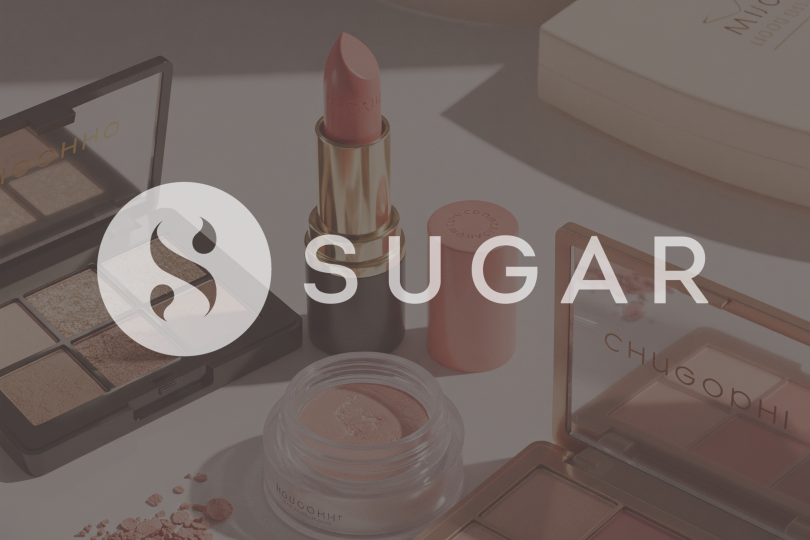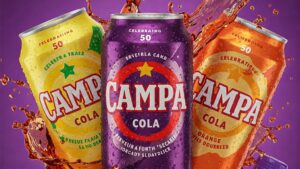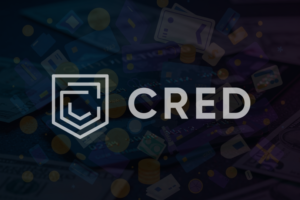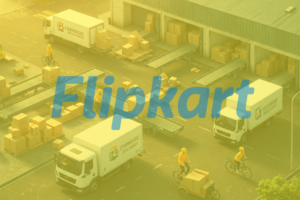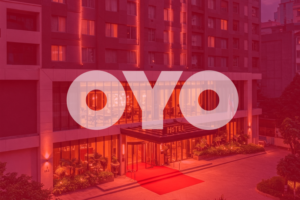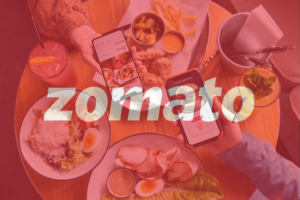Remember when makeup shopping meant battling department store salespeople armed with mascara wands? Then came Sugar Cosmetics, a brand that flipped the script and changed the Indian beauty game forever. If you haven’t heard of Sugar yet, you’re in for a treat—it’s one of those rare startup success stories that makes you think, “Why didn’t someone do this sooner?”
Let me tell you how a makeup-obsessed entrepreneur named Vineeta Singh built one of India’s fastest-growing beauty brands by understanding what young Indian women actually wanted, rather than what multinational beauty giants thought they should have. Grab your favorite lipstick (maybe a Sugar matte one?) and let’s dive in!
The Makeup Mismatch That Started It All
The year is 2015, and India’s beauty market is dominated by global giants like L’Oréal, Maybelline, and Lakme. These brands had largely brought their international playbooks to India – same formulations, same shades, same marketing. Just one tiny problem: Indian skin tones, weather conditions, and beauty preferences are wildly different from Western markets.
Enter Vineeta Singh, an IIM-Ahmedabad graduate and fitness enthusiast who had previously founded a lingerie subscription business. During her lingerie venture, she had noticed something peculiar – young Indian women were incredibly passionate about makeup, but constantly complained about products that didn’t work for them. Foundations that turned orange on Indian skin. Lipsticks that faded after a single cup of chai. Eyeliners that smudged in India’s heat and humidity.
“I was that customer myself,” Vineeta has said in interviews. “I’d spend so much money on international brands only to be disappointed when products didn’t suit Indian skin tones or last through our weather.”
This personal frustration, combined with her entrepreneurial instinct, led to the birth of Sugar Cosmetics in 2015. But unlike established players who relied on retail distribution, Vineeta and her co-founder (and husband) Kaushik Mukherjee decided to go digital-first in a market that was just beginning to embrace online shopping.
That’s what I love about this origin story – it wasn’t just about spotting a gap in the market. It was about feeling that gap personally and thinking, “I’m going to fix this myself.”
Starting Up: When Everyone Thinks You’re Crazy
Starting a makeup brand in 2015 in India was, to put it mildly, a bold move. The cosmetics space was crowded with deep-pocketed international players. Traditional retail distribution was expensive and hard to crack. And convincing young women to buy makeup online (without trying it first) seemed like an impossible task.
Plus, let’s be real – Vineeta wasn’t exactly swimming in capital. Sugar started with modest funding, operating out of a small office in Mumbai with a tiny team. The early days were classic startup hustle – late nights, multipurpose roles, and the constant anxiety of running out of money.
The conventional wisdom at the time was crystal clear: “Beauty products can’t be sold online in India. Women need to test them first.”
But Vineeta and Kaushik saw something others didn’t. Young Indian women were increasingly discovering makeup through YouTube and Instagram, not from salespeople at department stores. They were watching beauty influencers from around the world and craving similar products – but adapted for Indian needs.
So Sugar zagged when everyone else was zigging. Instead of investing in expensive retail space, they poured their limited resources into three things: product development tailored specifically for Indian women, bold Instagram-worthy packaging, and digital content that spoke directly to their target audience.
Early on, people thought they were nuts. But sometimes being a little crazy is exactly what disruption requires.
The Sugar Secret Sauce: Products That Actually Work
Here’s where Sugar did something genuinely revolutionary: they actually listened to Indian women. (I know, shocking concept, right?)
Instead of adapting Western formulations, they developed products from the ground up for Indian skin tones and climate conditions. Their foundations and concealers came in shades that complemented the diverse range of Indian skin tones. Their lipsticks were formulated to last through oily foods and multiple cups of chai. Their kajal and eyeliners were designed to withstand sweat and humidity.

“We would literally test our lipsticks with the spiciest curry and oiliest biryani,” Vineeta once shared in an interview. “If it survived that test, we knew Indian women would love it.”
This obsession with making products that actually worked for Indian women became their biggest differentiator. While other brands were pushing global bestsellers, Sugar was creating products that solved specific Indian beauty pain points.
And then there was the packaging – bold, Instagram-ready, and so distinct you could spot it from across a room. In a market where most makeup came in conventional, safe packaging, Sugar’s matte black products with pop colors stood out like a rebel at a corporate meeting.
Their product names were equally attention-grabbing: “Kohl Of Honour,” “Matte Attack,” “Smudge Me Not.” This wasn’t your mother’s makeup brand – it was young, bold, and unapologetically fun.
Digital-First When Nobody Believed In It
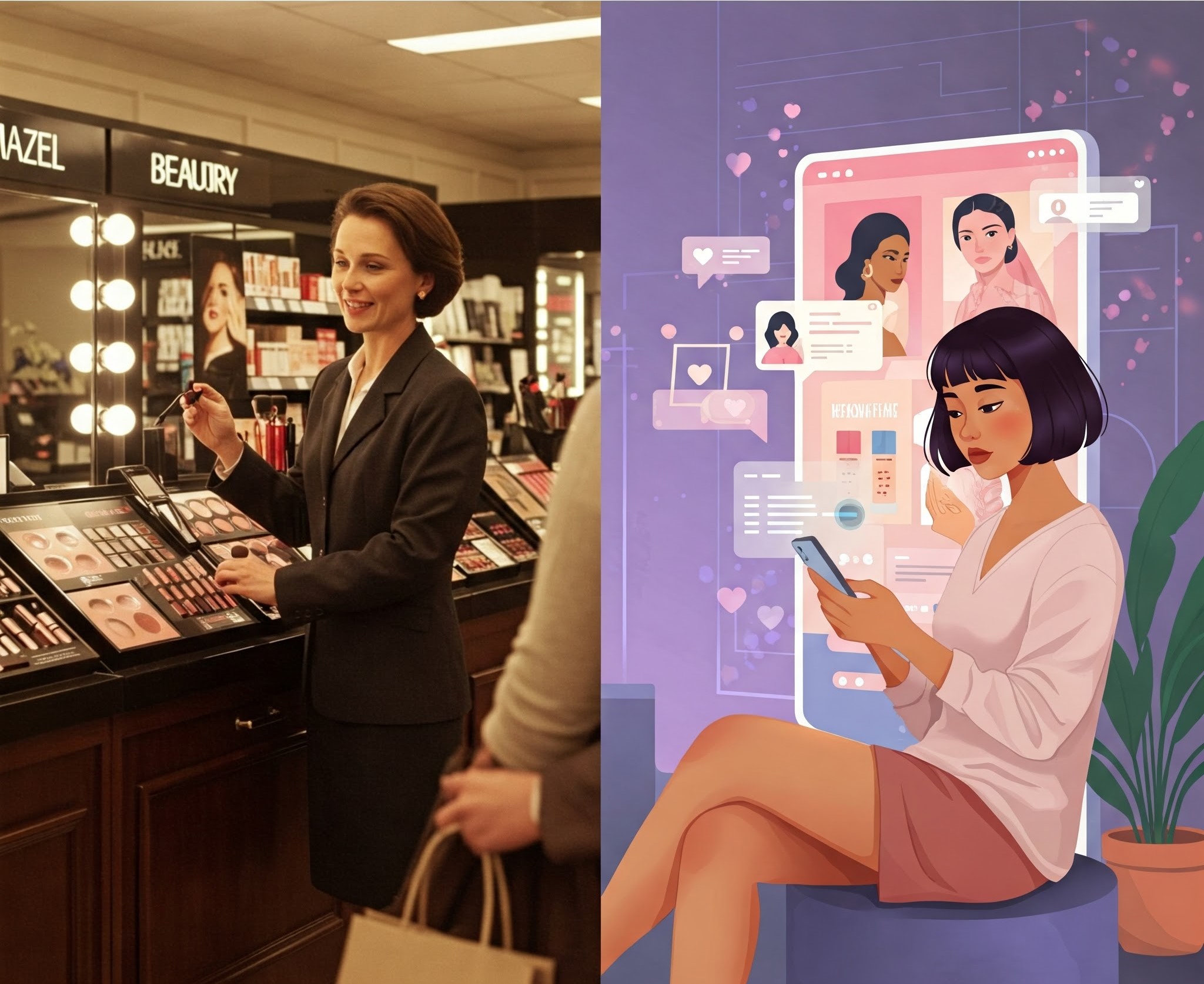
Sugar’s early bet on digital wasn’t just about selling online – it was an entirely different approach to building a beauty brand. Rather than spending millions on celebrity endorsements and TV ads (like established players), they invested in content across platforms where their young audience actually spent time.
Their Instagram game was particularly strong. While other brands were posting polished, professional photos, Sugar was sharing authentic tutorials, behind-the-scenes content, and user-generated content from real women.
They were also early adopters of influencer marketing in India, partnering with makeup enthusiasts who had loyal followers rather than traditional celebrities. This strategy seems obvious now, but in 2015-2016, it was pretty revolutionary for an Indian beauty brand.
What amazes me is how they turned a limited budget into an advantage. Without millions to spend on glossy campaigns, they were forced to be more authentic, more creative, and more connected to their community. They couldn’t afford to be another faceless beauty corporation – they had to build genuine relationships.
The result? A tribe of fiercely loyal customers who didn’t just buy their products but evangelized them. In marketing speak, that’s pure gold.
From Online-Only to Retail Domination
By 2017-2018, something interesting started happening. Sugar had built such a strong online reputation that customers were walking into physical stores asking for their products. The brand that everyone said couldn’t succeed without retail was now being pulled into retail by consumer demand.
This reversed the traditional playbook. Instead of fighting for shelf space, retailers were approaching Sugar, eager to carry their products. Talk about a power shift!
Their expansion into retail was methodical. Starting with Shoppers Stop and Health & Glow, they gradually expanded to Lifestyle, Nykaa stores, and eventually their own exclusive brand outlets.
What’s fascinating about this phase is how they maintained their digital DNA even as they expanded physically. Their stores weren’t just places to buy products – they were content creation spaces, with good lighting for selfies and makeup testing. Store staff weren’t just salespeoople but were trained as makeup advisors who could create content for the brand’s social channels.
By 2021, the brand that started as an online experiment had over 10,000 retail touchpoints across India. That’s what I call a plot twist!
Shark Tank Fame and Funding Success
If you’re an Indian TV viewer, you probably know Vineeta from her role as a “shark” investor on Shark Tank India. The irony isn’t lost on anyone – the entrepreneur who once pitched to skeptical investors is now on the other side of the table, evaluating startups herself.
This visibility boosted Sugar’s profile, but the brand was already on a serious growth trajectory. They raised $21 million in Series C funding in 2021 and followed that with a massive $50 million Series D round in 2022 led by L Catterton, valuing the company at around $500 million.
For a brand that started with modest capital in a market dominated by multinational corporations, this growth is nothing short of remarkable. They’ve reportedly crossed the ₹500 crore revenue mark and are targeting ₹2,000 crore in the next few years.
What I find inspiring about their funding journey is how they stayed true to their core DNA even as they scaled. More money didn’t mean abandoning their community-focused approach – it meant doubling down on it while expanding their reach.
Growing Pains and Challenges
Of course, Sugar’s journey hasn’t been all smooth sailing (is any startup’s?). As they’ve scaled rapidly, they’ve faced their share of challenges:
Intense Competition: The success of Sugar has prompted a wave of Indian D2C beauty brands like Plum, Mamaearth, and MyGlamm. The market that once had limited options for Indian women now has dozens of homegrown brands competing for attention.
Supply Chain Complexity: Scaling from an online-first model to thousands of retail points required building sophisticated supply chain capabilities – not an easy task in India’s complex retail landscape.
Maintaining Brand Identity: As they’ve grown from scrappy startup to well-funded beauty player, maintaining their rebellious, authentic voice becomes harder. There’s always the risk of becoming exactly what they once disrupted.
International Expansion Challenges: Their early attempts at international markets have shown that replicating their Indian success abroad requires adapting to very different beauty cultures and consumer behaviors.
What’s impressive is how they’ve navigated these challenges without losing their core identity. They’ve scaled, but haven’t “sold out” – at least not yet.
Lessons for the Innovation Ecosystem
So what can other entrepreneurs and innovators learn from Sugar’s journey? Here are some thoughts:
Solve Real Problems, Not Imagined Ones: Sugar succeeded by addressing genuine pain points for Indian women, not by creating artificial needs. The best businesses solve real problems.
Question Industry Orthodoxy: Everyone “knew” beauty products couldn’t be sold online in India until Sugar proved them wrong. Sometimes the conventional wisdom is just conventionally wrong.
Community Before Commerce: Sugar built a community before they scaled their commerce. This patient approach created a tribe of loyal customers who became their best marketers.
Local > Global: Instead of importing global beauty standards, they celebrated and catered to local preferences. This “proudly Indian” approach resonated deeply with consumers tired of being treated as an afterthought by global brands.
Content as a Competitive Advantage: From day one, Sugar treated content as core to their business, not just a marketing function. This content-community-commerce approach has proven difficult for larger, less agile competitors to replicate.
Founder Authenticity Matters: Vineeta’s personal story and genuine passion for the category shines through in everything Sugar does. In an age of faceless corporations, this authenticity has become a genuine competitive advantage.
The Future: What’s Next for Sugar?
Today, Sugar continues to expand its product range, retail presence, and international footprint. They’ve moved beyond just makeup into skincare, launched a men’s grooming brand (SUGAR MAN), and are exploring new categories.
The brand that started by making lipsticks that could survive spicy curry is now a full-fledged beauty empire with ambitions to become a global player representing Indian beauty innovation.
Will they succeed in international markets? Can they maintain their authentic voice as they grow? Will they eventually be acquired by one of the global beauty conglomerates they disrupted? These questions remain open.
What’s clear is that Sugar has already changed the Indian beauty landscape permanently. They’ve proven that understanding local needs, building digital-first brands, and authentically connecting with consumers can allow Indian startups to compete with (and beat) global giants.
For young entrepreneurs looking at the Sugar story, perhaps the biggest lesson is the power of understanding your customer deeply and personally. Vineeta didn’t just see a market gap – she felt it. She didn’t just create products – she created solutions for problems she experienced firsthand.
In a world obsessed with fancy business models and complex strategies, sometimes success comes down to something refreshingly simple: creating products that people actually love, talking to them like real humans, and building a community that feels like they’re part of something special.
And that approach, like Sugar’s lipsticks, seems to have real staying power.
References
- Sugar Cosmetics Official Website: https://www.sugarcosmetics.com/
- “From Living in Matchbox House in Mumbai to Building a Leading Makeup Brand: An Inspiring Tale of Vineeta Singh” – Mint
https://www.livemint.com/companies/start-ups/from-living-in-matchbox-house-in-mumbai-to-building-a-leading-makeup-brand-an-inspiring-tale-of-vineeta-singh-11708533956909.html - “Sugar Cosmetics Founder: The Inspiring Journey of Vineeta Singh” – Chegg India
https://www.cheggindia.com/earn-online/all-about-sugar-cosmetics-founder/ - “Vineeta Singh – Wikipedia”
https://en.wikipedia.org/wiki/Vineeta_Singh - “Success Story of Vineeta Singh: Founder of Sugar Cosmetics” – StartupTalky
https://startuptalky.com/vineeta-singh-success-story/ - “Vineeta Singh’s Journey with Sugar Cosmetics is a Remarkable Tale” – LinkedIn
https://www.linkedin.com/posts/joeydash_vineeta-singhs-journey-with-sugar-cosmetics-activity-7287310871897260034-QB1o - “Sugar Cosmetics: Bold, Innovative, and Redefining Beauty in India” – StartupTalky
https://startuptalky.com/sugar-cosmetics-success-story/ - “Vineeta Singh: Story of Triumph Over Adversity” – Vikas Joshi
https://www.vikasjoshi.in/vineeta-singh-story-of-triumph-over-adversity/

